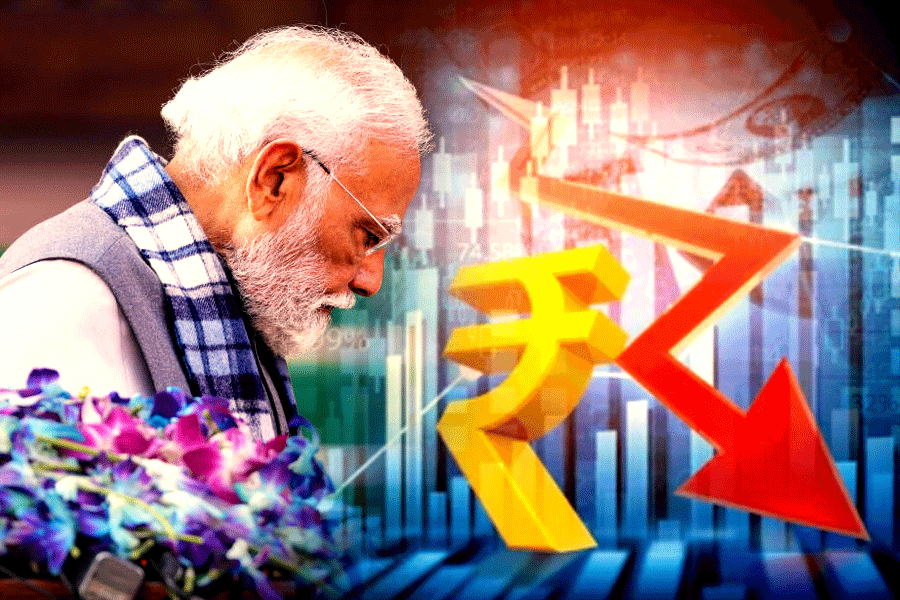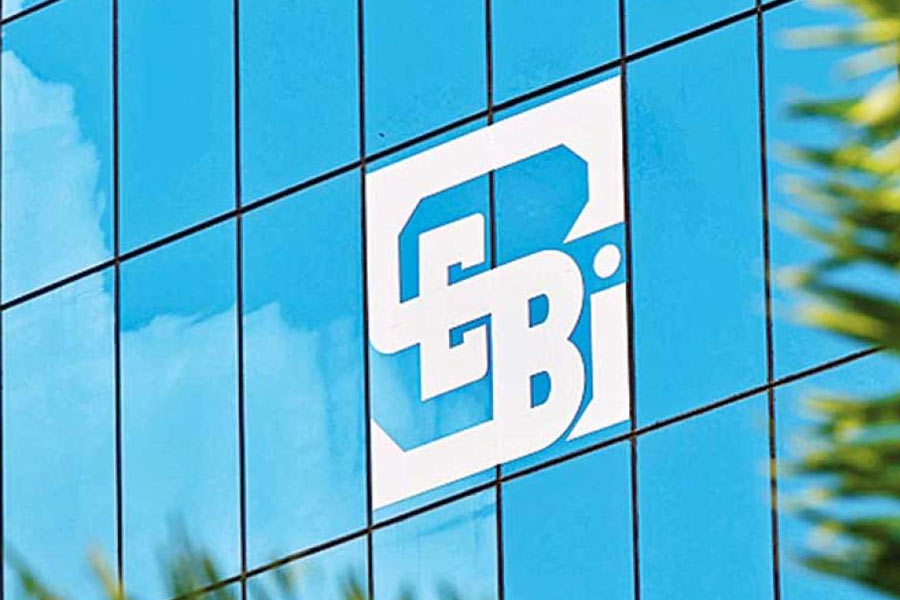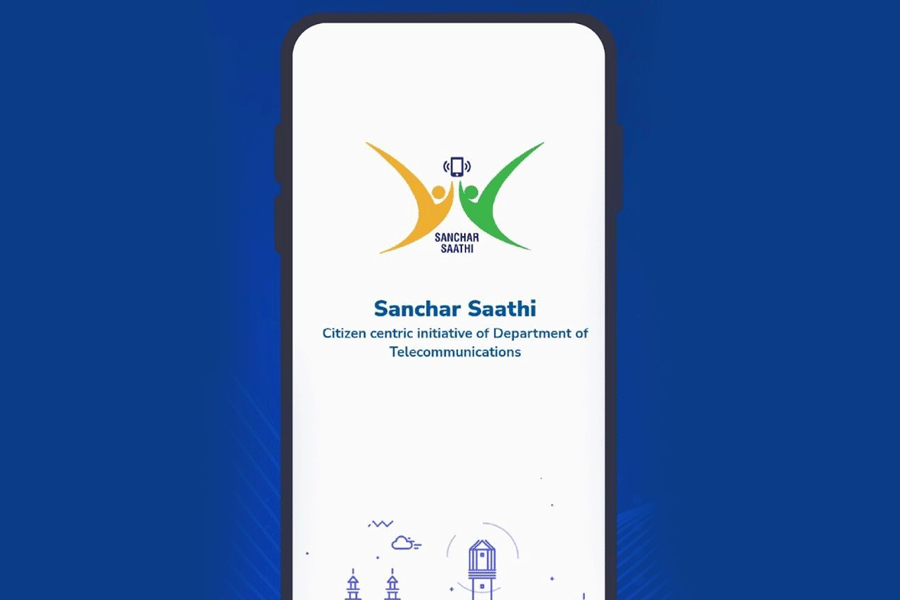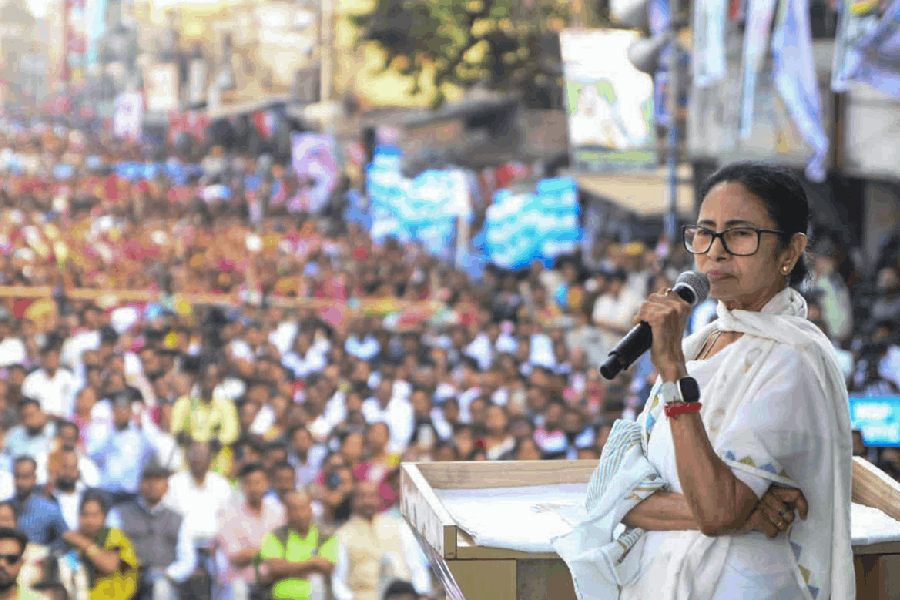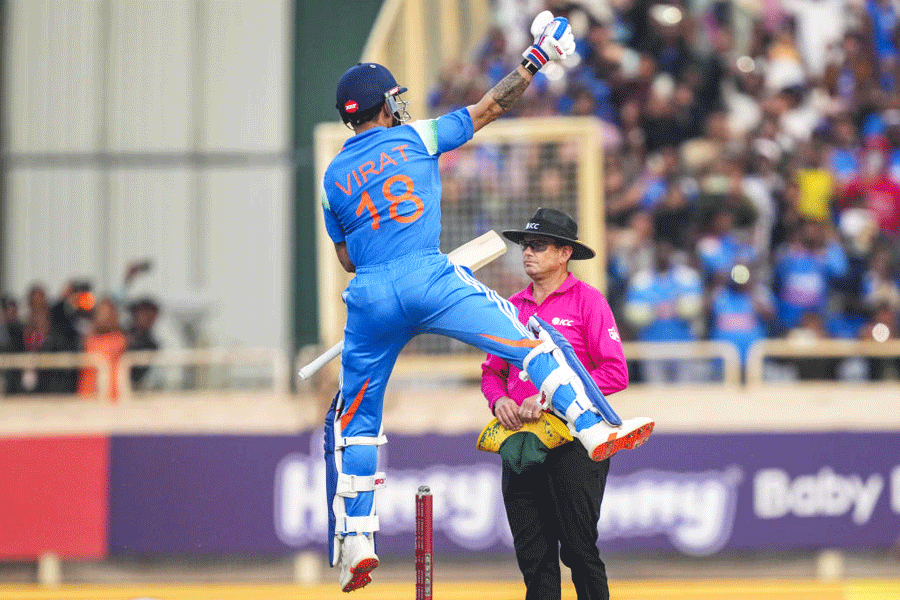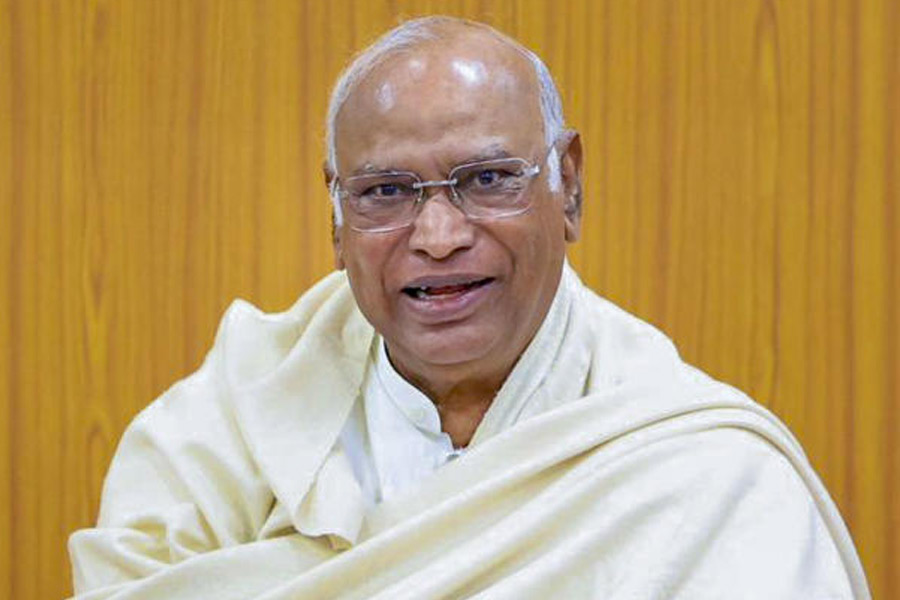 |
I crouched on top of a rock hill that resembled a bald head speckled with tufts of bright green grass. The wind blew strong, a little too strong, and those of us who had packed smartly pulled our jackets closer and held on to our caps. A spectacular view lay before me in the mountainous region of Chitradurga in Karnataka… tense cloud cover, uneven roads and bold rock hills lined with windmills at premeditated distances, all three blades churning in motion like giant fans fuelling the countryside. It was around 5.30am and I had reached the spot by road after heading north-west from Bangalore for around 90 minutes.
“Wake up and smell the burning rubber!” yelled a cameraman. I heard the roar of an engine from behind the hills, its tyres warming to the rocky terrain. That was our cue. The best angles had been calculated and the cameras were already in place, tripods tied together with loose rope, an improvised safety net against the gusty winds. And in a minute, I spotted a white Maruti gypsy manoeuvring a hairpin bend in the distance as it tore down the gravel track.
This was it. This was Day One of Maruti Suzuki Dakshin Dare, south India’s longest motorsports rally covering over 2,000km from Bangalore to Goa — made for those who like to live life extreme.
 |
 |
 |
| GYPSY STYLE: (From top) The first three winners in the Extreme car category of Dakshin Dare — Sandeep Sharma and Varun Davessar’s white Maruti Gypsy, followed close on their heels by Sanjay Agarwal and Venu Ramesh Kumar, and edging its way into third spot Amanpreet Ahluwalia and Sudeep Halder |
STAGE FRIGHT
When I arrived in Bangalore the day before, I was solemnly handed an indemnity bond. “We require you to sign here,” said an official, pointing to a blank space at the end of lots of printed matter. It implied that everyone — except the person wielding the pen, of course — would be absolved of all responsibility if something untoward were to happen. I thought up a few worst-case scenarios like getting bumped off by a speeding car while trying to get a good shot or tripping off rocks I’d climbed out of curiosity (which eventually did happen but I escaped with a grazed knee). With cars zooming past the stage at 140km an hour, this was survival of not (just) the fittest but the fastest!
PS: For the uninitiated, the ‘stage’ in car rally lingo is a challenging stretch of road, in this case between 50km and 80km, with inclines, declines and tight turns so that the driver can show off his/ her skill behind the wheel. Stage fright? Nah.
GAME OF DRONES
For many men who love their machines, the next best thing after wake-up sex is waking up to the sound of engines revving up. Even if it’s at 4am. Yes, a car rally means an early start.
I woke up at 3am, an hour before the rallyists set off because we had to reach the vantage spots before the participants. Groggy-eyed and breakfast boxes in hand, we set out in our Innova, catching up on sleep until dawn broke and the golden rays threw light on the picturesque southern peninsula. Nature drove sleep away as I rolled down the car windows and soaked in the beauty of the Western Ghats, hair streaming in the wind.
After reaching the stage, we scrambled out of the car to answer nature’s call behind the bushes. While the boys would conveniently stop the car along the way, the girls had to wait. Eventually, the need to go every day became a sort of code game. Desperate eyes, a weak grin and polite signalling towards nowhere in particular meant, “Hey, you wanna go pee?” So as one girl kept watch, the other would go behind the bushes, exposed to the harsh winds, hoping that the loud drones of the engines hadn’t awakened sleeping snakes and creepy-crawly dwellers of good earth.
As Mother Nature would have it, we all survived.
REEL-ITY CHECK
Gypsy to Honda City to Volkswagen Polo tore down the stage, with a two-minute gap between each, crossing dips and ruts and leaving behind a cloud of dust. Villagers, halted by officials till the cars passed, stood open-mouthed and children waved. “Shooting?” one of them asked with big eyes. “Yes, it’s a Yash Raj film,” played along one of the boys.
The irony was that the rally stage was like a film. Sunflower fields that seemed to go on forever, magical windmills and racing cars and bikes. Stuff that films are made of.
 |
| Nataraj ranked second in the Extreme Bike category |
SPEED DEMONS
AMANPREET AHLUWALIA: At the onset of Dakshin Dare, all eyes were on the defender of last year’s title, Amanpreet Ahluwalia, who along with his teammate and Calcutta boy Sudeep Halder led the pack in a Maruti Gypsy.
His black Gypsy tore across the track with ‘Aman’ written in bold letters across the front. They were labelled the comeback story of the rally. On Day Two, Aman slipped to the eighth position after receiving a stop-and-go penalty. But by the final day, he edged himself back into the game at third place. “Coming first wouldn’t have been as thrilling as coming third after a five-minute penalty on Day One,” grinned the light-eyed Punjabi.
SANJAY AGARWAL: His orange Maruti Gypsy continued to thrive on home ground. Along with navigator Venu Ramesh Kumar, the duo were red hot right through, clocking just seconds behind, and bagging second spot.
SANDEEP SHARMA: For Team Maruti duo Sandeep and navigator Varun Davessar, it was a nail-biting finish. They were trailing by eight seconds on Day One but Day Two onwards, they kept the lead. “We took the rally day by day, asking ourselves, ‘Where am I standing today?’ ‘What is my target?’ and ‘What are the timings I have to maintain?’ That was the key to achieving my goal. I knew where the others stood so I planned accordingly. There was no point in trying to do more, it would only kill the machine,” said Sandeep.
COUPLE CATEGORY
The two people in a rally car — the driver and the navigator — share a love-hate relationship. “We are like husband and wife,” laughed Extreme category rallyist Amanpreet Ahluwalia. You see, the navigator’s job is to direct the driver in car rally language. When his rally notes read, ‘100 R3 ! ][’, what it means is, ‘At 100km, where the road turns right at 30 degrees, caution! There’s a bridge’. (Spending a week with a bunch of wheel-crazy boys can get you rather up to speed).
So one wrong instruction and it could cost them a penalty running from seconds into minutes. “Imagine, you’re leading the rally on Day One and suddenly you get to know you’ve got a five-minute penalty! It was shocking. And five minutes in a rally which has very small stages. If you have stages running 60km to 70km long, you can instantly make up. But then again, it’s a rally so anything can happen,” added Aman.
 |
| A car crash on Day Three. The occupants escaped unhurt. |
MONEY TALKS
So how much does a participant spend for a rally like this? “It’s an expensive sport. Extreme participants spend more because a lot goes into modifying the car. For TSD Endurance category, it costs less,” said Jaidas Menon, of Motorsport Inc, the company Maruti has brought on board to manage the rally.
Extreme category winner Sandeep Sharma tagged the running cost including entry fee at Rs 5 lakh. “For any person to do this rally, the first thing you need is a car modified according to safety norms, which takes a couple of lakhs. Then there’s the entry free and service cost. I would peg the running cost for a rally like this at around Rs 5 lakh,” he said. But if you’re good, sponsors will support you. “Initially, we used to spend our own money, now fortunately Maruti sponsors us. My career in rally started in 1992 and it’s been 22 years. My first sponsorship was in 1998 and after that I’ve been sponsored by some team or the other.”
WHAT DRIVES THEM?
“You’ve got to be a bit eccentric to be in a rally,” said Calcutta-based Pranab Bhaduri, 60, a participant in the Endurance rally. “I was stuck in my car, which weighed 3,000kg, in slush and it was doing a fish tail,” said the Ballygunge resident.
“It’s nasha,” said a 63-year-old participant, only just having recovered from a cerebral attack and still in the rally to take part at the amateur level.
“Today the width of the road was almost as wide as my car. Then it began to rain and we got stuck in slush. It was damn scary! We pulled it out and I was in one mind to jump out of the car! It just went through slowly, very slowly,” recalled Sheena Sabharwall, who drove a Baleno with Calcutta girl Poonam Das as navigator in the Endurance category.
“I’ve had absolutely no sleep but it’s been fantastic — like a roller-coaster ride,” said Prathima, who finished second in the Endurance category.
A Honda City, running third on Day One, crashed out as it went off the trail in the first stage of Day Two. And on Day Three, Imran Khan and co-driver Gagan Vijay driving a Maruti Esteem, had a major crash.
And yet, they’ll all be back next year.
CAR RALLY FOR NOOBS
Stage: The competitive sections of the rally, a challenging stretch of road with inclines, declines and tight turns which the car tries to cross in the shortest time possible.
Legs: In a car rally, days are referred to as legs.
TSD: Time, speed, distance. Also called the Endurance category.
Tulip: A rally route chart.
Navigator: The co-driver who sits next to the driver. His job is to navigate by giving running commentary about directions.
Pace/rally notes: A description of the road ahead.
Roll cage: A constructed frame of high-carbon steel tubes welded inside the car to protect the occupants in case of an accident or roll-over.
Time control: Where cars must stop to get an official passing time recorded by rally officials.
Zero Car: A car driven through a stage before it starts to alert spectators that the section is live.
Shotgun: Not Shotgun Sinha but sitting alongside the driver in a moving vehicle.
RALLY ROSTER
 |
DAY ONE: BANGALORE
The Maruti Suzuki Dakshin Dare, with 160 participants in the Extreme (pro level) and Endurance (amateur level), flagged off at Orion Mall. The six-day motor-rallying event would be covering over 2,000km across the southern peninsula — Mysore, Shimoga, Chitradurga, Davangere, Bellary, Hospet and Hubli to conclude at Goa.
DAY TWO: BANGALORE TO CHITRADURGA
Distance: 400km
In Kannada, chitra means picture and durga means fort. The terrain was uneven and the region dotted with windmill farms. The hairpin bends and gravel made it tricky to traverse.
DAY THREE: Davangere to CHITRADURGA
Distance: 475km
The rally started from Davangere, a city in Karnataka, amidst a light drizzle. The route was a mix of tarmac and dirt, which allowed the cars to flaunt their speeds on the relatively flat terrain. Potholes, patches of slush and sharp corners meant mud-slinging rally action.
DAY FOUR: BELLARY TO TUNGABHADRA CANAL
Distance: 100km
Finally, a sunny day! Starting from the Vidyanagar township in Bellary district, the rally moved ahead to the Canal stage, right next to the brimming Tungabhadra. Ditches and patches of slush meant high-speed jumps and skids!
DAY FIVE: OUTSKIRTS OF HOSPET
Distance: 250km
There was triple the action with three stages, the first being a Country-side leg set in the wilderness, with tricky turns meandering through villages. The two Windmill legs had vehicles going up and down hill tops, powering through the dirt.
DAY SIX: HOSPET TO GOA
Distance: 500km
The prize distribution at The Lalit Golf & Spa Resort in Goa.
The man whose team put the route together for Dakshin Dare — Jaidas Menon of Motorsports Inc:
 |
How do your team select the route?
Whenever we’re driving somewhere, we look around. I had come to Hospet on some work at Hyatt Place and driving down to Hampi, I saw this stage, drove down a few kilometres and it was quite interesting. Our team usually starts a recce around seven-eight months before the rally. Then if we get the permissions, we go ahead.
Which were your favourite stages this year at Dakshin Dare?
The Canal stage on Day Three and the Windmill stage on the final day. The first and second days had similar stages but because of heavy rains, the roads got washed away and when we went on the final day of the recce, we had to work almost 40 hours to get new routes.
How can motorsport rallying grab more attention?
We need more awareness. For example, in Sri Lanka, motocross events are very popular and children start riding at five years there. You have an audience of at least 1 lakh who come to watch, and they pay to watch an event like that! We have to popularise the whole sport and get people to come and watch. Look at F1, everyone knows about it and you have some 20,000 people who come watch the Buddh International Circuit (Noida).
What kind of terrain is home ground?
Any driver would like dirt roads more than tarmac.
What is the evolution of Maruti rally cars?
In my days, we started with the Esteem, then Honda City and Baleno. We were the first to drive the Baleno and the wheels used to fly off the stage; it was fast but a lot of R&D went in to make it a stronger car. It’s not that you start rallying with every new car.
Since Maruti Suzuki Dakshin Dare is not a one-make event, why didn’t we see a Mitsubishi Cedia or Lancer? Is it to do with maintenance or because the car is too expensive?
Every day you’re doing 80km of stage, so some cars won’t take that beating. Even when we started with the Esteem, it was trial and error. Every 2km, something used to break and it took two years to change it into a strong rally car. This year, there was one Volkswagen Polo that took part.
Finally, you were seven-time national champion yourself… why did you stop?
I stopped rallying in 2007 and then got into organising. I was with Team MRF. You can’t keep on doing it forever; you have to stop sometime (smiles).
IT LOOKS LIKE A FAST DRIVE BUT IT’S NEVER A BLIND DRIVE —
 |
SANDEEP SHARMA (winner)
How did winners Sandeep Sharma (left) and Varun Davessar conquer the tough Canal stage on Day Three? “You forget there’s a canal on one side and you drive like it’s a normal road! The good thing is it was pretty wide; wherever it was bumpy and technical, that’s where experience comes in,” said Sandeep. His advice for beginners? “There are smaller events that happen all over the country now thanks to Maruti and a few more sponsors. There’s Indian National Autocross Championship and the Solo Challenge Championship which is coming up. They are one-day single-stage events and very cost-efficient. They are like stepping stones to the bigger rallies,” said the three-time national champion (2005, 2008 and 2009).
 |
Tagore Park resident Poonam Das (in pink) took to rallying thanks to her hubby Vishal. “He taught me how to calculate, feed the entries, take turns and match the TC (time control),” said the 27-year-old, who’s participated in Raid De Himalaya, the toughest of the three rallies organised by Maruti. It was the first time for her driver Sheena Sabharwall. “You need long hours of road experience before taking part in a rally,” said the Pune resident.
 |
Part of the Calcutta contingent at Dakshin Dare. This year, there were more than 12 participants from Calcutta at the car rally. “What we need is Extreme category rallies back home so that we gain more experience,” said Sudeep (fourth from left). The next biggie coming up? The eastern leg of the Indian National Rally on October 31 and November 1 with its super stage in Calcutta.


